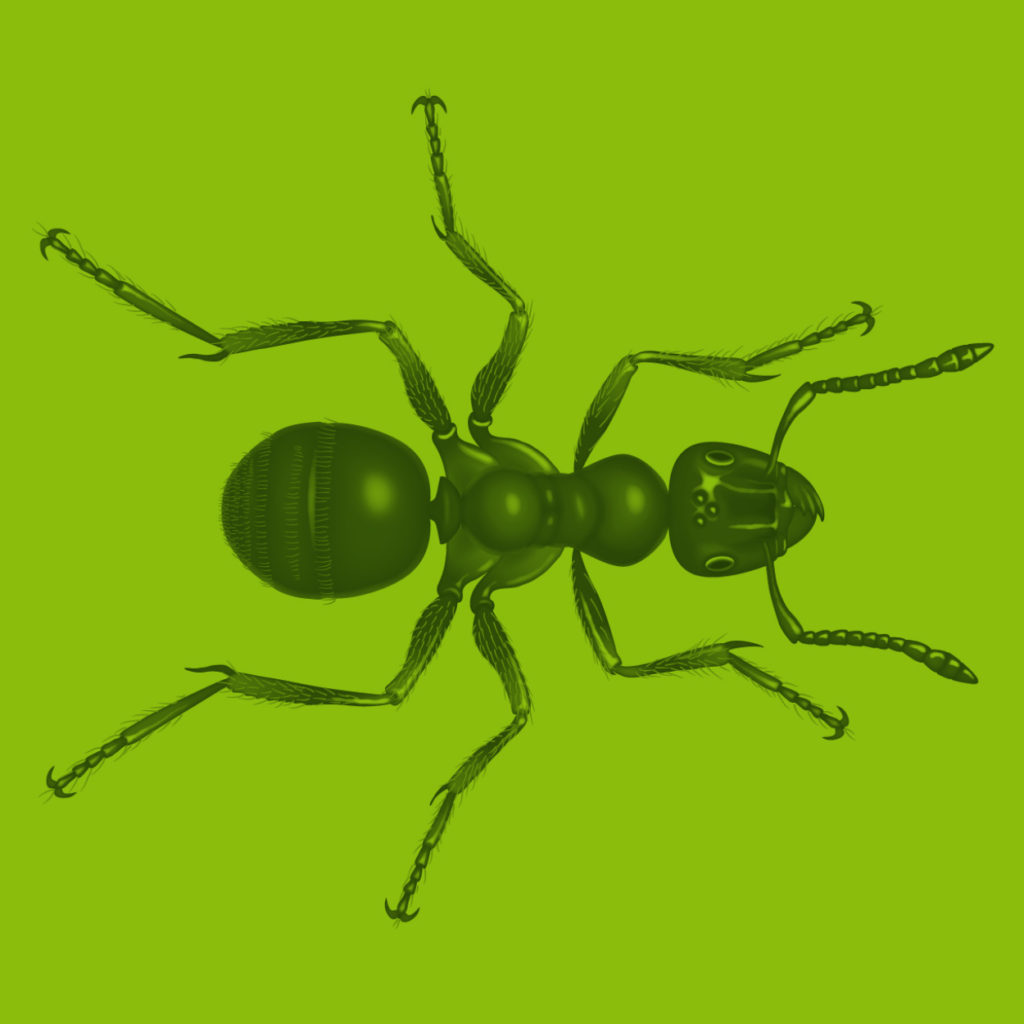Ant
(Lasius)
The workers have a black or brown body, often with a lighter thorax. With a size of approx. 2.5 to 6 mm, they belong to the smaller ants in Central Europe. They often have weakly developed simple eyes and their antennae are shorter than those of wood ants (Formica).

Prevention tips
- Seal exterior cracks in the foundation of buildings, windows and doors
- Under stone slabs in the garden: use coarse gravel instead of sand
- Keep food in tightly sealed containers, immediately clean up spilled sugary substances
Diet
The animals feed on the sugary excretions of the aphids, but they also eat smaller insects. As so-called “house ants”, some species particularly love sweets and meat.
In bad weather conditions, they are therefore happy to invade houses and look for replacement food. The ants can appear in the house all year round. Some types can become annoying in the living area, especially if they find themselves in the kitchen. Certain fungal species lead a cohabitation (symbiosis) with some ant species. Their appearance in the living area can therefore also be associated with the exposure of moisture to installed wood materials. The woods can be destroyed by the animals, so that load-bearing pieces of wood may be endangered.
Life
Black garden ants are common in dry and sandy habitats, some also in farmland, forests and hedgerows.
Some species are cultural followers and also live in settlement areas, parks, gardens and meadows. They nest in the ground, under stones, in walls and in dead wood.
In the wild they occur from spring to autumn. The winged males and females swarm from July to August (exceptionally also from May to October) They fly out of the nest, mate and the fertilized females then create new colonies. The swarms are often very large. The animals can run extraordinarily fast and orient themselves visually well.
Benefits
The ants have a special role to play in soil cultivation. They loosen, mix and ventilate the soils through the nest construction, crushing a lot of material and making it accessible to smaller organisms. They remove carrion, mushrooms, rotten wood and organic waste.
Their excrements are the best fertilizer for the plants. In this way, ants promote the formation of humus and make it easier for plants to build a root system.
Due to their high food requirements and their efficient hunting behaviour, ants regulate the populations of other insects.
In medicine, formic acid is considered an anti-inflammatory, in the textile and leather industry it is used for pickling and impregnation. It is sometimes used as a disinfectant (also in acidic detergents) as it kills bacteria.
Beekeepers use them to treat bees against the varroa mite.